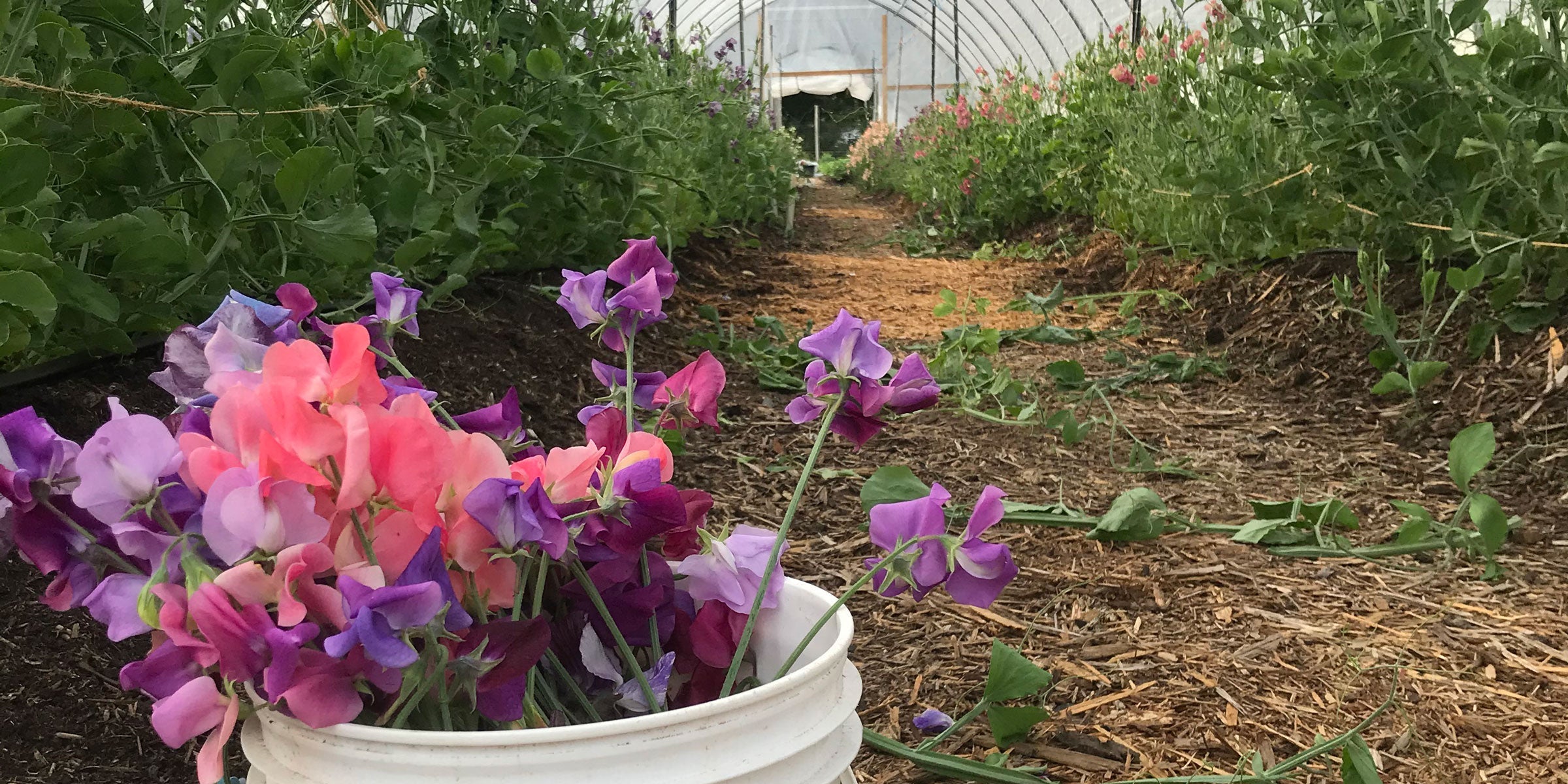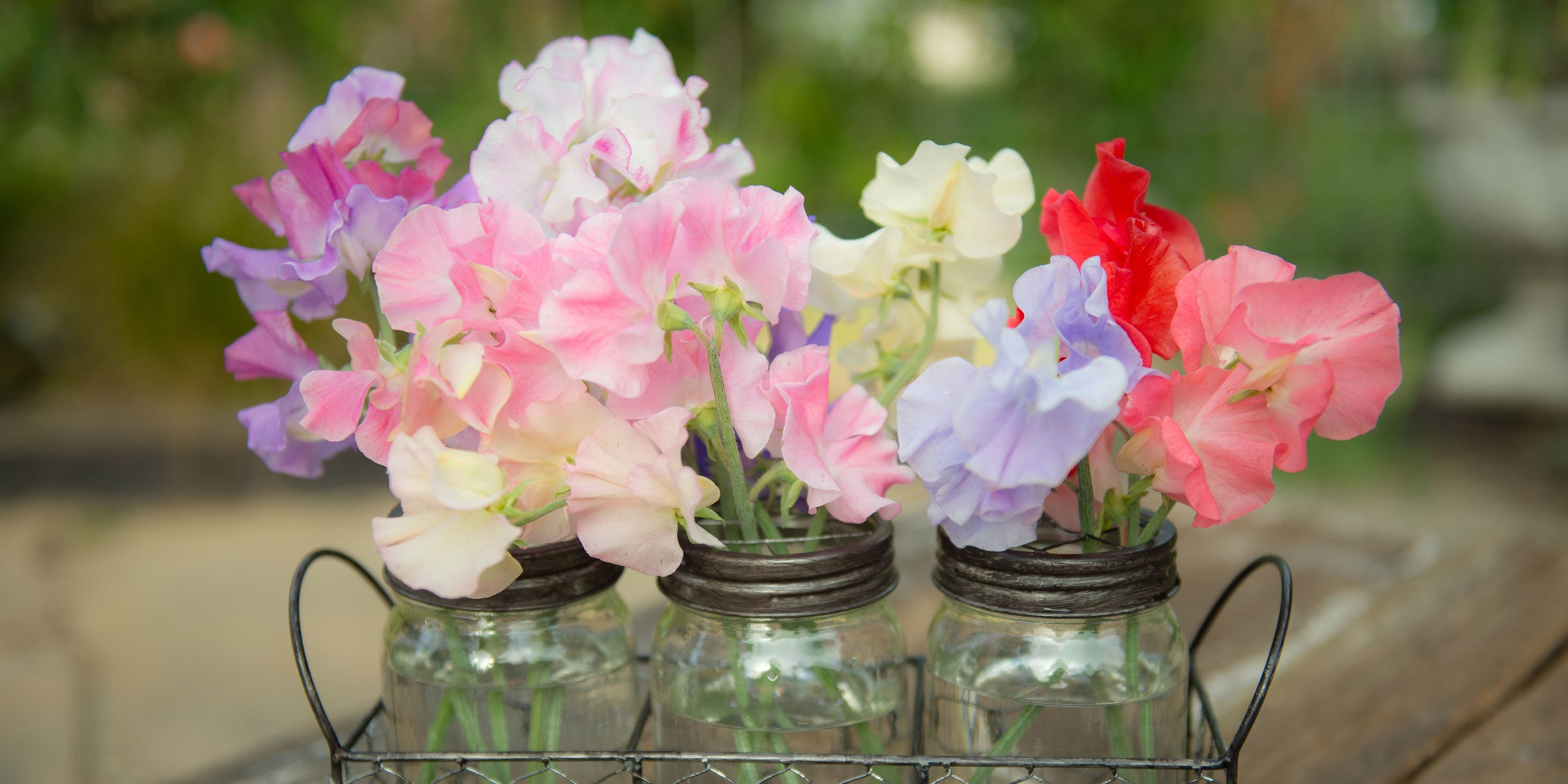Article: Why I De-Rogue Sweet Peas—and Why It Matters

Why I De-Rogue Sweet Peas—and Why It Matters
When you grow sweet peas for seed, one of the most important tasks doesn’t look like much from the outside. It doesn’t involve bloom counts or fancy equipment. Just a quiet walk through the rows, and a careful eye for what doesn’t belong.
These outliers are called rogues.
A rogue might be a bloom with a deeper hue than the rest. A flower that leans violet when it should be soft apricot. Or a rich magenta streak where cream was expected. Some are subtle—easy to miss if you're not looking closely. Others stand out right away, like they’ve landed in the wrong garden entirely.
And while they might be beautiful in their own right, they’re not what I’m here to grow.
Why Rogues Matter — and Why They Sometimes Still Appear
Sweet peas mostly self-pollinate, which helps keep their traits consistent. But nature still has its surprises. Occasionally, small shifts in color, form, or scent can occur, making a flower less true to the variety a gardener expects.
That’s where roguing comes in.
By removing these off-type blooms, I protect the integrity of the seed, ensuring that when you order a packet of ‘Apricot Queen’ or ‘Theia Bella,’ that’s exactly what you get—true to type, no surprises.
However, even with careful roguing, a rogue might still occasionally appear in a seed packet. There are a few reasons why:
-
Human error: Despite best efforts, seeds can sometimes get mixed during harvesting, processing, or packing, allowing a seed from a different variety to slip into the packet.
-
Genetic mutation: Occasionally, a natural mutation can cause a bloom to appear different—even if it grew from a true ‘Apricot Queen’ seed. These mutations are rare but part of the magic and unpredictability of growing from seed.
Understanding these possibilities is part of appreciating the craft of seed growing—and the difference between hand-harvested heirlooms and mass-produced mixes.
What Happens to the Rogues?
Just because they’re not right for seed doesn’t mean they’re wasted.
I carry a small bucket with me as I work through the rows, collecting rogue blooms as I go. Later, they make their way into a vase in the house—filling a room with unexpected color combinations and odd little variations. It’s a small ritual I love. Even the misfits get a moment of appreciation.
They don’t make it into the seed packets, but they do make it into the story.
—
Interested in growing your own sweet peas from hand-harvested sweet pea seed?



Leave a comment
This site is protected by hCaptcha and the hCaptcha Privacy Policy and Terms of Service apply.